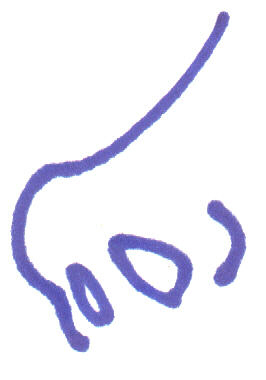Rhinology/Allergy Pages
Sinus infections
Acute sinus infections, including the viral form: the common cold, are very common, affecting over one billion U.S. citizens per year. Most of these episodes are self-limited and resolve without treatment, though 0.5 to 2.0% (20 million patients) progress to become acute bacterial infections. Chronic sinus infections affect 31 million patients in the U.S. as well. The rates of sinus and atopic disease are on the rise in our industrialized setting.
The term rhinosinusitis is a better label than "sinusitis" as the nose (rhino) is affected as well as the sinuses. Rhinosinusitis can be subdivided into multiple categories depending upon the patient�s history, etc.
Acute rhinosinusitis (ARS): A sudden onset of symptoms in a patient whom previously had no sinonasal symptoms characterizes ARS. The symptoms last less than 4 weeks, and will resolve completely either spontaneously (i.e., without any medical therapy) or with medical therapy. The major symptoms for ARS are anterior & posterior nasal discharge, nasal congestion, facial pressure/pain, and fever. The minor symptoms for ARS are cough, headache, halitosis, and earache.
Subacute rhinosinusitis: The patient describes symptoms similar to ARS, though they may last up to 12 weeks. The patient will typically require medical therapy to return to their normal state.
Recurrent acute rhinosinusitis: The patient suffers more than one episode of ARS per year, yet is completely without symptoms between these episodes.
Chronic rhinosinusitis (CRS): The sinus symptoms that the patient describes persist for greater than twelve weeks. The patient will have evidence of persistent inflammatory changes seen on CAT scan after a prolonged course (four weeks or longer) of medical therapy. The symptoms of CRS are more vague than ARS; the CRS patient may not be able to localize their symptoms, or may complain mainly of nasal obstruction.
Acute exacerbation of chronic rhinosinusitis: These patients have an underlying constellation of symptoms that periodically intensifies, or they develop new symptoms. Medical therapy will resolve the new or intensified symptoms, though the chronic symptoms remain.
The treatment for rhinosinusitis begins with a thorough medical history and physical examination. Concomitant factors, such as allergic rhinitis, must be looked for and treated. The evaluation process may require fiberoptic examination of the nose, CAT scan of the sinuses, and possibly allergy testing. Medical therapy is tailored to the specific type of rhinosinusitis, and to any comorbid disease states.
If medical therapy is unsuccessful in controlling the symptoms, then surgery may be an option. Our understanding of sinus anatomy and function has been dramatically improved with the advent of nasal endoscopes, which allow a magnified view within the nose, and advanced imaging techniques, i.e., CAT scans. Sinus surgery now focuses on the areas which are the �root of the problem� in causing obstruction of the sinuses: an area termed the osteomeatal complex. This is an area of confluence of numerous sinuses and, when diseased, can cause significant symptoms. Sinus surgery today is more focused, less invasive/painful, and more successful than in the past.
